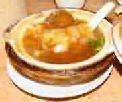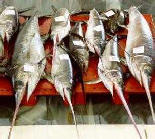|
Forty-nine states, the District of Columbia and America Samoa issued a total of 2,618 advisories in 2001 about potential health risks associated with consuming fish they catch themselves.
That number represents a 107 percent increase from the 1,266 advisories issued in 1993, the first year that the U. S. Environmental Protection Agency (EPA) compiled an annual list of fish advisories.
"Today I am commending the states for increasing their efforts in this very important public health initiative," said EPA Administrator Christie Whitman. "Although fish are a healthy part of our diet and fishing is an all American recreational pastime, some individuals, such as pregnant women and small children, may need to limit their intake of certain non-commercial fish."
"We are continuing to reach out to communities by helping the states issue fish consumption advisories," Whitman added.
Whitman reported that the EPA and the U.S. Public Health Service have distributed outreach materials to about 200,000 health care providers throughout the country, to alert their patients to possible contaminants in fish.
States can issue one or several types of fish advisories. For example, some advisories recommend no or limited consumption of some types of fish, while others may recommend certain preparation and cooking methods to reduce risk.
An advisory may be targeted to the population at large or to specific
groups, such as pregnant women or children. It may also be limited to
certain sizes or species of fish, or may apply to fish caught in a particular
section of a waterway or to all waterways.
Although there are advisories for a total of 39 chemical contaminants,
most advisories involved five primary contaminants: mercury, PCBs, dioxins, DDT and chlordane. Last year, the number of advisories increased for PCBs and DDT, and decreased for mercury, dioxins and chlordane.
All of these compounds can accumulate in fish tissues in amounts many times higher than their concentrations in water and are passed up through the food chain.
Almost 75 percent of the advisories have been issued at least
in part because of mercury contamination. The 2,618 advisories
in the national listing represent about 28 percent of the nation's total
lake acreage and 14 percent of the nation's total river miles.
About 79,119 lakes and 485,205 river miles are under advisory, as well as all of the Great Lakes and their connecting waters. There are also various advisories in many other waterways, including Lake Champlain, the Chesapeake Bay watershed and 20 national estuaries.
Twenty-eight states have statewide advisories, up five states from 2000.
Whitman also announced the release of a special edition
of the "Should I Eat the Fish I Catch?" brochure in
celebration of the 30th anniversary of
the Clean Water Act
.
A listing of the 2001
National Listing of Fish and Wildlife Advisories
is available at:
http://www.epa.gov/waterscience/fish
|



